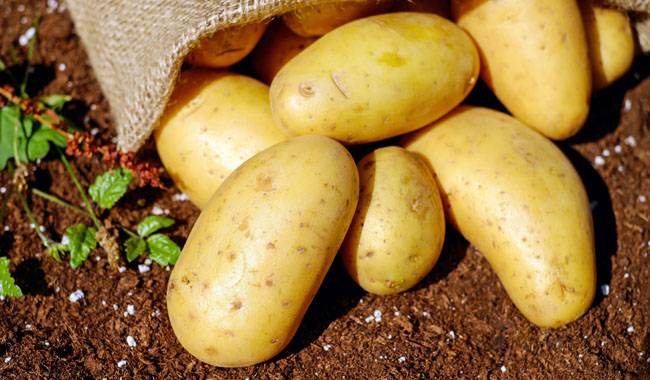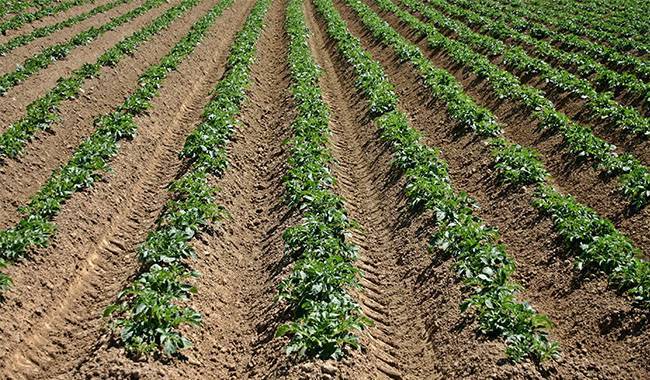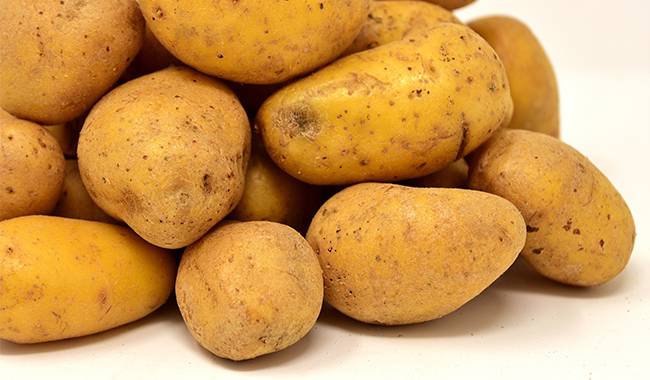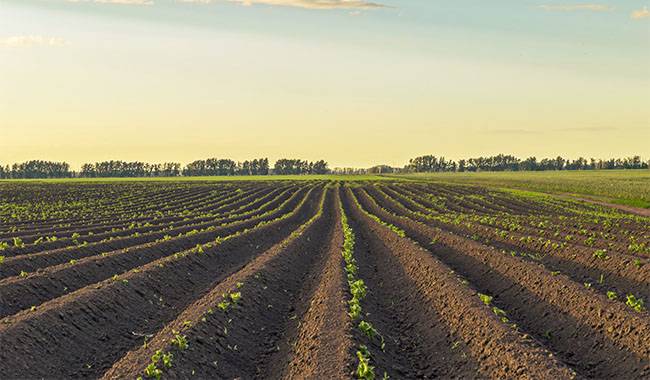
The ingenuity of our amateur vegetable growers knows no bounds. They come up with more and more options for potato growing beds. Often, the most interesting ideas are born in the process of solving a particular problem.
For example, in spring, someone gets a plot of land on virgin land and they want to try growing potatoes during the season. Or there is not enough space on the dacha and you want to fit everything in at once.
The main reason for innovation – of course – is that we always want to simplify and facilitate the work of the family farm.
It’s interesting to learn about the advantages and disadvantages of alternative potato planting methods. Do they really make a grower’s life easier?
Potato planting in trenches
Potatoes are already grown in trenches – a method that works well on small plots of land. Experts say that potatoes in trenches can yield twice as much as with traditional techniques.
However, this method is quite labor-intensive, which is apparently why it is still not common among vegetable growers.
Preparation for planting in this way begins in autumn. A trench about 20inch (50cm) deep is dug along the length of the bed. It is filled with organic matter – a mixture of peat, mulch, sawdust, fallen leaves, straw, etc.
In this form, the bed was left until spring, and as the first warm days arrived, it was covered with black polyethylene film for better warmth.
For a large amount of planting material, not one, but several trenches are needed. They are made and set back up to 27inch (70cm). The unused soil is left in the rows and may still be needed during the season.
Germinating potato tubers can be planted in trenches when the temperature of the substrate reaches 42-46°F (6-8°C). Cover the potatoes with a layer of soil or compost, then cover with plastic film.
When sprouts appear, cut holes in the film cover to allow the stems to grow freely. This method keeps moisture around the bush and gets rid of weeds. It is also possible to leave out the film and just cover the growing stems with soil left at the edge of the trench.
Growing potatoes in ditches are simply not suitable for areas with a high water table. In very wet conditions, potatoes are likely to suffocate and rot. In this case, you should not dig the soil but raise the bed.
Potatoes in a box
You can grow a good potato crop even on the poorest soil by planting potatoes on raised beds. Boxes up to 12inch (30cm) high and about 40inch (1m) wide is made for this purpose.
The length of the box depends on the ideal size of the bed. The bottom is filled with twigs, traction, and other plant residues, and fertile soil is added on top. Potatoes are planted at 12inch (30cm) intervals and covered with a layer of soil 5-7cm) thick.
As the shrubs grow, the soil should be added to the box. This method will allow you to plant potatoes without unnecessary weeding and mounding.
All plants in the box receive good sunlight and it is very easy to take care of them. This method is also easy to water.
The biggest disadvantage of this method is that it requires a lot of time and effort to build the boxes. It is also necessary to find the right materials. But in the future, such beds can serve for more than a year.
Both of the above methods work on the principle of “hotbeds”, which are known to use organic fillers. During the season, the organic material gradually decomposes, releasing heat and stimulating the growth of potato bushes.
Thanks to this type of heating, it is possible to start growing potatoes in the beds several weeks earlier than usual. As a result, the first tubers will appear sooner and yields will be higher.
Potatoes under the straw
This method, which will soon be 100 years old, was first tried by European vegetable scientists.
Recently, it has gained renewed popularity because potatoes can be grown under straw, even on virgin land, without pre-treatment of the soil.
Sprouted potatoes are placed in small holes, trenches, or simply on the ground and covered with a 6-8inch (15-20 cm) thick layer of wet, chopped straw. As the shoots grow, add straw to increase the mulch height to 20inch (50 cm).
Through a thick layer of mulch, almost no weeds germinate and, in addition, the structure of the soil is significantly improved during this season.
In addition, straw protects potatoes very well from frost and overheating. The tubers on the “straw” bed become large and clean, they are easy to remove.
But this method of cultivation has its own drawbacks. Mice often breed in straw, and they can destroy parts of the crop. In addition, during periods of drought, additional watering is required, as the straw does not retain moisture well.
Growing in cones
A well-known amateur vegetable grower from White America has come up with another unusual method of growing potatoes in mounds of soil (cones).
According to reports of gardeners who have tried this method in practice, potato yields of up to 1.3 tons per hectare can be achieved with this type of planting.
Potatoes are grown in cones as follows.
- A circle with a diameter of 60-80inch (1.5-2 m) is marked out on the plot previously plowed and fertilized.
- The tubers were placed along the circumference of the circle at a distance of 8-10inch (20-25 cm) from each other.
- As the stems grow, the soil is raked toward the center, forming a low mound. A small depression is made on top of it for irrigation.
While growing in the cone, the potatoes develop a strong root system on which many tubers are formed. However, during the season, the soil must be added several times so that the roots are not exposed and a favorable temperature regime is maintained inside the cone.
This method may work well only in small areas where it is very difficult to use small-scale mechanization.
Potatoes under the mulch
This method does not require picking and, according to its proponents, allows you to get your first crop of potatoes earlier than usual.
The method consists of the following.
- On a prepared plot, lay black film and securely fasten its edges with metal staples or nails.
- In the film, make cross notches where you plan to place the tubers (in rows or staggered).
- Plant the potatoes in small holes, dig in the notched areas and cover them slightly with soil.
That’s it, no more weeding and loosening, you just need to protect the potatoes from the Colorado potato beetle in time. The black mulch material won’t allow weeds to grow and will build up heat, encouraging a rapid increase in green mass and root development.
But there are drawbacks to this method – if the summer is hot, the tubers under the film will overheat while there is plenty of precipitation, and instead, moisture will be retained.
Perhaps in areas with cool summers, film cover is a good option for early harvest. However, it is necessary to constantly monitor soil conditions under the film to avoid overheating and fungal diseases.
Bagged or bucket potatoes
If there is little space on the plot and no room to set up beds, then it is likely to be limited to large polyethylene bags, metal buckets, or even buckets of water. Some amateur growers grow potatoes in this way, not only in country houses but also on the balconies of city apartments.
Polyethylene bags are filled with light, fertile soil in which slits are cut to plant germinating tubers. These bags can be placed at the edge of the plot or in the backyard or in other suitable places. The main thing is to provide good sunlight for the plants.
Such potato plants are taken care of as usual – watered, given extra nutrients, protected from diseases and pests. And to get a harvest, simply shake out the contents from a bag or other container and collect the tubers.
When planting in barrels or buckets, it is recommended to spread the potatoes on a small layer of soil and gradually increase the soil to a height of 1 meter. Some people claim that with good care, a barrel can produce almost a sack of potatoes.
But it must be remembered that potato tubers are formed just at the beginning of the bush’s growth, before flowering. And this does not lead to the formation of new underground shoots, no matter how high the plant is covered with soil.
This method has a serious disadvantage – small containers are strongly heated by the sun. And if you put the bags or buckets in the shade, the shrubs will lack sunlight, which will affect the amount of harvest.
Growing potatoes in pits
This method is similar to the previous one, the only difference being that the potatoes are planted in pits. The planting hole can be of any size and depth – at least 16inch (40 cm).
A layer of compost is poured on the bottom, the tubers are placed on top and then lightly covered with another layer of compost. Water the soil in the same way as you would plant potatoes in a bucket.
Plant potatoes in a hole only if the groundwater is very deep. Otherwise, the potatoes may not grow well or may simply rot.
All these alternative planting methods work well for small plots of land. However, for growing tubers on 10-20 acres, or even more for industrial-scale cultivation, non-traditional methods are not suitable. Labor costs will be much higher than conventional cultivation.







